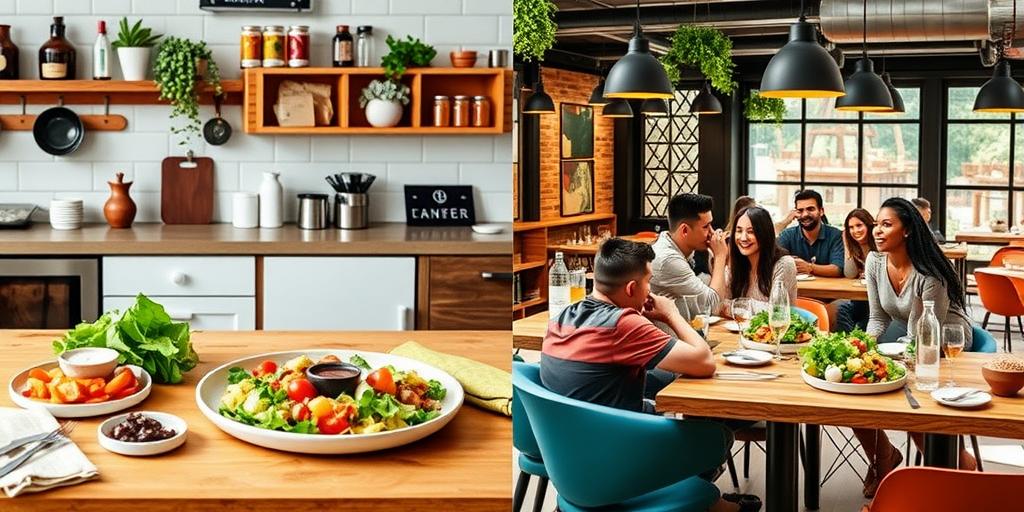Home Cooking vs. Dining Out: The 2025 Balance
In 2025, the decision between home cooking and dining out is more nuanced than ever. Factors like cost, health, convenience, and environmental impact play significant roles in influencing our choices. This article explores the evolving landscape of food consumption, providing insights to help you strike the right balance.
The Rising Costs of Dining Out
Dining out has become increasingly expensive. Inflation, rising labor costs, and supply chain disruptions contribute to higher menu prices. A typical meal at a mid-range restaurant can easily cost $20-$30 per person, excluding drinks and tips. For families, these costs can quickly add up.
- Inflation Impact: Food prices at restaurants have outpaced those in grocery stores.
- Hidden Costs: Consider transportation, parking, and potential impulse buys.
- Occasion Creep: Dining out is no longer reserved for special occasions, leading to increased spending.
The Health Benefits of Home Cooking
Home cooking offers greater control over ingredients and portion sizes, promoting healthier eating habits. By preparing your meals, you can reduce your intake of processed foods, excessive sodium, and unhealthy fats.
- Ingredient Control: Choose fresh, whole foods and avoid processed additives.
- Portion Management: Serve appropriate portion sizes to manage calorie intake.
- Dietary Needs: Easily accommodate dietary restrictions and allergies.
Convenience and Time Management
One of the primary appeals of dining out is convenience. In today’s fast-paced world, many individuals and families struggle to find the time for meal preparation. However, advancements in meal planning and cooking technologies are making home cooking more manageable.
- Meal Kits: Services like Blue Apron and HelloFresh provide pre-portioned ingredients and easy-to-follow recipes.
- Smart Appliances: Instant Pots, air fryers, and other smart appliances streamline the cooking process.
- Time-Saving Techniques: Batch cooking, meal prepping, and efficient grocery shopping can reduce time spent in the kitchen.
Environmental Impact
The environmental impact of our food choices is a growing concern. Dining out often involves more significant carbon footprints due to transportation, packaging, and food waste. Home cooking can be more sustainable with mindful practices.
- Reducing Food Waste: Plan meals carefully and utilize leftovers.
- Sustainable Sourcing: Choose locally sourced and seasonal ingredients.
- Eco-Friendly Packaging: Minimize single-use plastics and opt for reusable containers.
Striking the Right Balance
The key to a balanced approach in 2025 is to strategically integrate both home cooking and dining out into your lifestyle. Consider the following:
- Prioritize Home Cooking: Aim to cook most of your meals at home to control costs and improve health.
- Strategic Dining Out: Reserve dining out for special occasions or when time constraints are unavoidable.
- Utilize Technology: Leverage meal planning apps, smart appliances, and online grocery services.
- Mindful Choices: Whether cooking at home or dining out, make informed decisions about ingredients, portion sizes, and sustainability.
Conclusion
In 2025, the balance between home cooking and dining out is a personal equation influenced by various factors. By understanding the costs, health implications, convenience aspects, and environmental impact, you can make informed decisions that align with your values and lifestyle. Embracing a strategic approach allows you to enjoy the best of both worlds, optimizing your food consumption for a healthier, more sustainable, and budget-friendly future.
